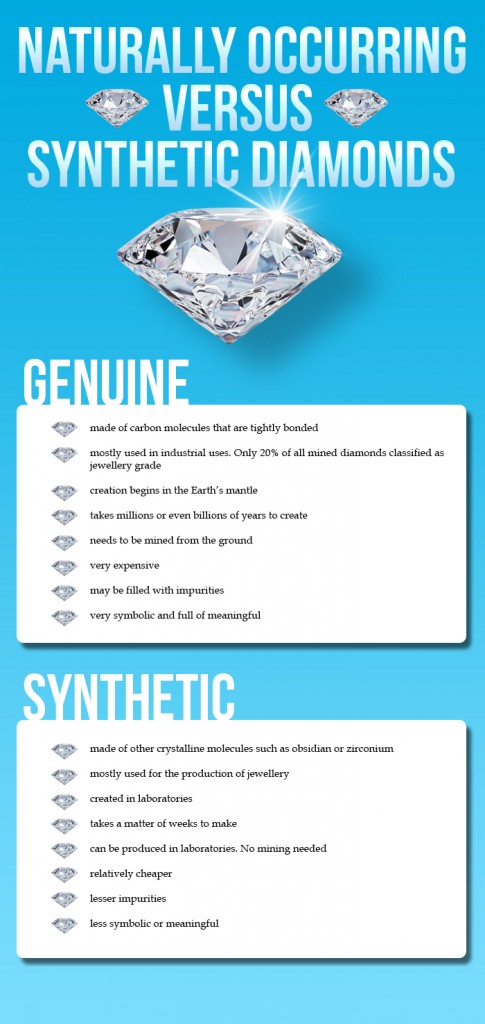Have you ever stopped and thought about Diamonds at all? They are not just for your modern diamond engagement rings you know!
Diamonds are used pretty extensively within industry for a number of different things. As diamonds are one of the hardest known substances to man, they do come in pretty handy for all sorts of things, especially if things are hard and need cutting, such as glass. So diamonds are not only pretty and nice to look at, they do have a purpose and a use as well. In fact, diamonds are used a lot more extensively within industries than you most probably realize. Something else that you may not know is that they are also grown as well!
Synthetic Diamonds
Diamond actually comes from ancient Greek and translates as unbreakable. It is a diamonds inherent strength which makes it such a useful tool within modern industry. Only around 20% of diamonds mined from the ground will go on to be used in jewellery, with the remaining 80% being used by industry. Technology has come on a long way since diamonds were first discovered, so much so that it is now possible to make synthetic diamonds which can be used in industry. Up to four times the amount of synthetic diamonds are used within industry each year as opposed to naturally occurring diamonds. Generally when diamonds are used in industry they are used for either a cutting tool or an abrasive especially with things such as glass. Synthetic diamonds are basically made from coal, the same as normal diamonds, and placed under extreme pressure. This pressure is artificial and does take some time to get the finished product. Although nowhere near as long as their natural counterparts though. Other than coal other things are required to make an artificial diamond such as Obsidian and Coal Dust, but the process is relatively simple though it is time consuming.
Only around 20% of diamonds mined from the ground will go on to be used in jewellery, with the remaining 80% being used by industry.
The difference between natural and synthetic
In essence, a natural and a synthetic diamond are almost exactly the same. They are made from the same materials and the process is very similar. The main difference is a natural diamond is formed over time in the Earth and takes a long time, where as a synthetic diamond is made in a factory or laboratory and is made in a fraction of the time of its natural counterpart. Most synthetic diamonds are made with a high pressure and high temperature technique which cause Nitrogen and other impurities to give the diamond a yellowish colour amongst others. A lot of manufacturers of these artificial diamonds claim that their product cannot be told apart from the real thing, although some of these impurities do give the game away and a trained gemologist would most likely be able to tell the difference.
Why produce artificial diamonds?
There are two main factors which determine the necessity of using synthetic diamonds;
- Time
- Money
The production of a synthetic diamond can be done very quickly indeed, a matter of weeks depending on how big a diamond you are trying to produce. A natural diamond though can take between 1 and 3 billion years to produce so the time difference is massive. There is also a big cost difference as well involved. A synthetic diamond can cost a fraction of the cost of mining a naturally formed diamond. When you think about the costs of mining, these can be huge.
- Workers
- Machinery
- Time
- Security
- Transport
Another bonus of a synthetic diamond is that these are the hardest materials known to science, even harder than naturally occurring stones. As most synthetic stones are used in industry, this means that they can get a very hard stone which is perfect for cutting.
Synthetic diamonds and jewellery
So do people use synthetic diamonds in jewellery? The answer is yes, but not a lot. Most of the diamonds, which are used, are naturally occurring stones. These diamonds have their flaws and colours, which make them unique. People do use synthetic stones for jewellery, but the next time you go to a jeweler it is most likely that the modern engagement rings that you see will be natural rather than synthetic. Although synthetic diamonds are cheaper than their natural counterparts so this may be a reason you wish to buy one. Make sure that before you purchase a diamond that you have the provenance to prove where it came from.
You wouldn’t want to think you are buying a natural diamond when it is in fact a synthetic stone, would you?






